Why you can trust TechRadar
The large 4.3-inch screen of the HTC Desire HD, like its cousin the HD7, is simply ace for browsing the web, easily as good as anything else in the Android range.
The WVGA resolution (800x480) screen means you can get nice and close to the text, and for added benefits there's also support for HTML5 and more importantly for some people: Flash 10.1.
If you're unaccustomed to the different variations in the Flash family, 10.1 integration not only means that you can watch videos from places like the BBC and Sky without needing a separate application, but they will run within the webpage, without having to jump to a dedicated media player.
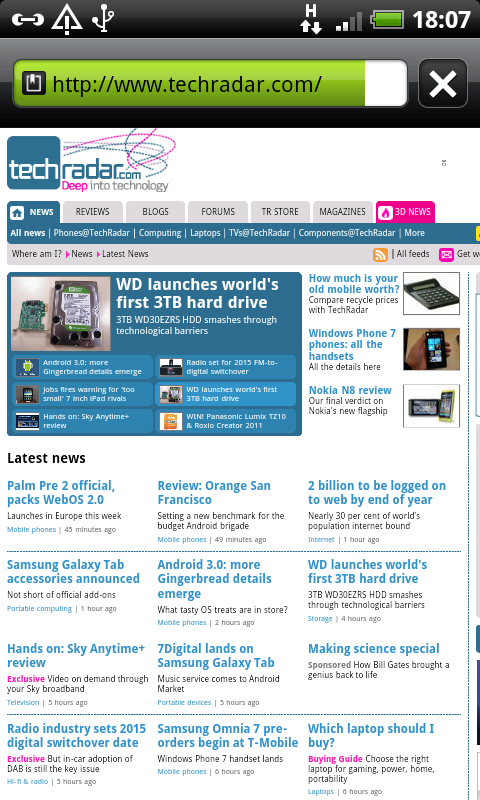
However, in the case of Flash on the HTC Desire HD, it feels like it's not quite up to speed at times. While using BBC and the like is acceptable (if a tiny bit choppy) when it comes to using YouTube in its native format the audio syncing is poor and the overall effect not the best.
You can use the dedicated mobile YouTube site, which uses HTML5 to work quickly and simply, but a number of videos in your favourite playlists still won't play in this format it seems.
Anyway, the iPhone 4 manages just fine without Flash, so there's no reason to get too angry about it here, and it is useful in a number of instances (and probably still the best implementation on the market).
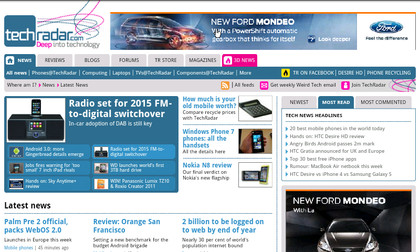
There are a number of other positives to the internet experience on the HTC Desire HD - multiple windows with thumbnail scrolling through them mean various websites can be open at once.
It's odd that you're limited to just four windows though - the likes of Internet Explorer from Windows Phone 7 manages six, and we can't remember ever hitting an upper limit on the original Desire.
One think that Android (and HTC's Google portfolio especially) does well is text-wrapping; namely, zoom into whichever size you want on a column of text and the words will jumble around the screen and reformat to fill the display.
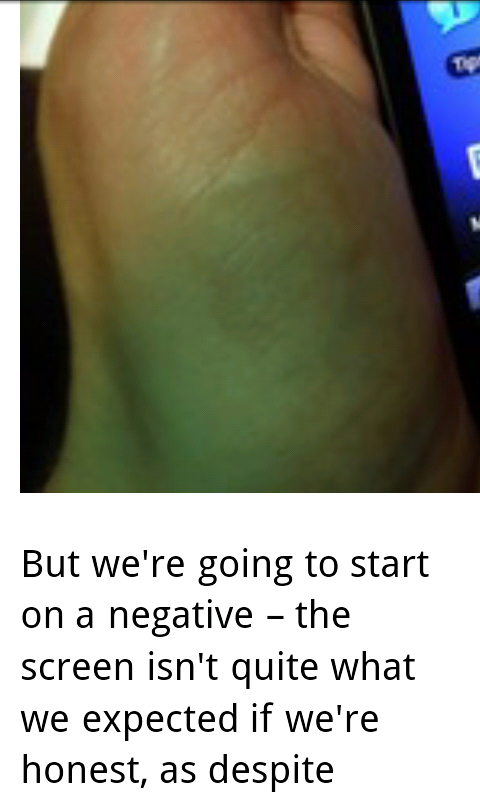
Sure, you can double tap to get closer to the text in the same vein as other smartphones, but the text wrapping puts you in control of the size... and you can go mightily close.
Another winning feature from Android is the ability to share web pages to a variety of sources without having to break stride: if you're on a page that you think your buddies online will like then you can head into the 'Share Page' option and lob the link out via Facebook, Gmail, Twitter, SMS, Bluetooth - you name it, you can get it there via that method. Not carrier pigeon though. This is a mobile phone, you fool.
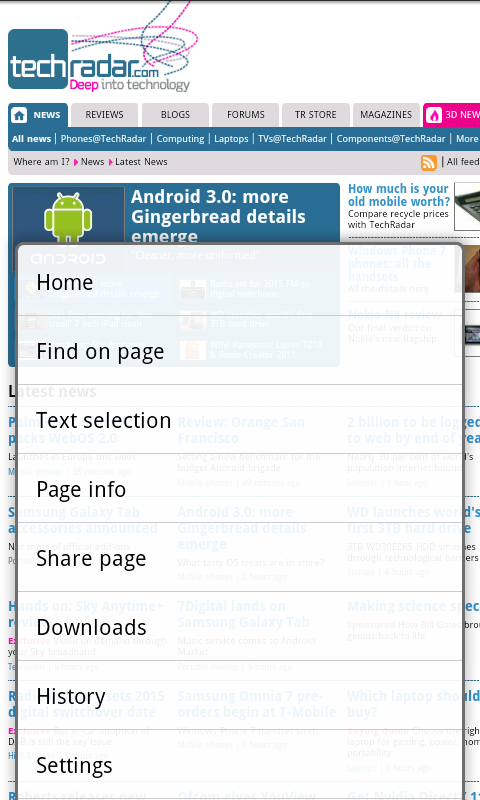
We've always been fans of the bookmarks, as when you enter this section you can either look at the ones you've saved (via thumbnail, nice) or see your most visited or history of pages you've been to - enabling you to choose bookmarks that you need without realising it.
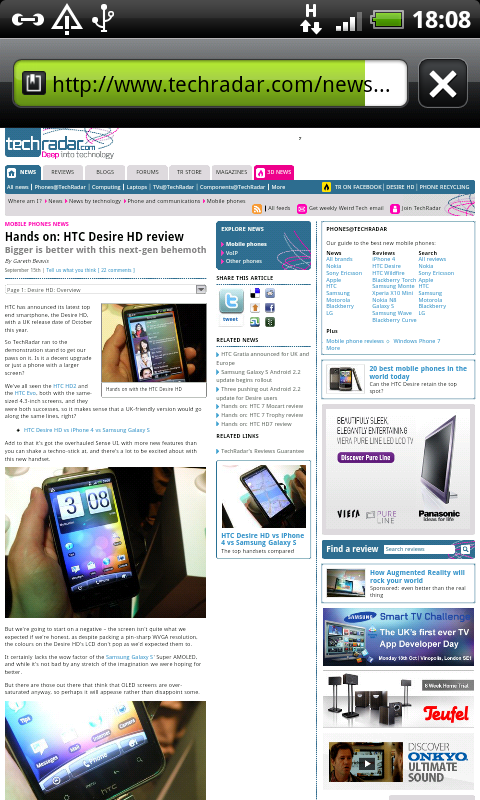
With the new Sense UI, users of the HTC Desire HD can also subscribe to an RSS feed (if present on the page) by hitting the icon in the top left hand corner of the screen - it makes keeping up to date with the sites you love (cough*TechRadar*cough*subliminalmessage*cough) very easy.
Another plus we've always loved on the HTC Android range: the implementation of copy and paste. It's a little Apple-esque, as you long press on text and see a little magnification pane pop up.
From there you can drag two little pins to select the text you want - which bar the colour is almost precisely the same as Apple's offering.
Where the difference lies is in the pop up menu that appears after: you can copy the text, share it via the same options mentioned earlier or use it to search.
But not just search on Google, oh no. You can look for the phrase on Wikipedia, YouTube, Google Dictionary or even Google Translate - and that's an awesome option.
The internet experience on Android phones has always been a plus, and the sheer speed, functionality and slickness of the offering on the HTC Desire HD is up there with the best of them.
Current page: HTC Desire HD: Internet
Prev Page HTC Desire HD: Messaging Next Page Desire HD: Camera
Gareth has been part of the consumer technology world in a career spanning three decades. He started life as a staff writer on the fledgling TechRadar, and has grew with the site (primarily as phones, tablets and wearables editor) until becoming Global Editor in Chief in 2018. Gareth has written over 4,000 articles for TechRadar, has contributed expert insight to a number of other publications, chaired panels on zeitgeist technologies, presented at the Gadget Show Live as well as representing the brand on TV and radio for multiple channels including Sky, BBC, ITV and Al-Jazeera. Passionate about fitness, he can bore anyone rigid about stress management, sleep tracking, heart rate variance as well as bemoaning something about the latest iPhone, Galaxy or OLED TV.
